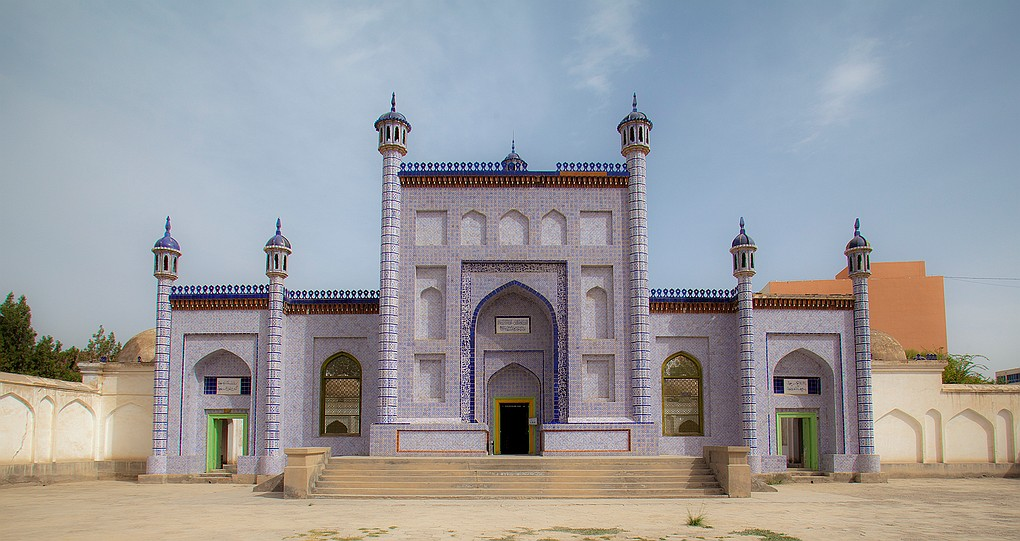Meshrep: A Rich Cultural Tradition of the Uyghur People and Thirty Men Meshrep
Oq Ya
Meshrep is one of the traditional customs of the Uyghur people, and it
has a long history deeply rooted in their cultural heritage. Familiar customs and social ethics facilitate the organisation
and management of Meshrep, seamlessly integrating morality, public discipline, art, and education.
Meshrep is recognised as the "school of art" and "cradle of
manners" for the Uyghur people.
Local Characteristics and Variations
Meshrep exhibits diverse local characteristics depending on regional
styles. Various types and names of Meshrep include:
- Thirty Men Meshrep: Prominent among the Ili
Uyghurs.
- Dolan Meshrep: Notable among the Dolan
Uyghurs.
- Other Variants include Dolan, Blue (Grass), and
Qeyit.
These local Meshreps are distinguished by their extensive scope, rich
content, and well-organised organisation.
Etymology and Meaning
The term "Meshrep" is derived from the Arabic word meaning:
- Personality, character, habit, nature.
- A place to drink.
In the modern Uyghur language, Meshrep refers to gatherings where people
sing, dance, party, and enjoy themselves. It also signifies human work and
activity.
Musical and Cultural Significance
Meshrep holds a significant place in the Uyghur musical tradition, especially in the Twelve Muqam, a collection of
classical Uyghur music.
- Meshrep (Tushurum): This term often denotes the
third verse of the Muqam, encapsulating a series of songs derived from
motifs within the Twelve Muqam. Meshrep serves as the musical structure
and concluding part of a Muqam's development, summarising the
characteristics of the preceding sections and concluding the entire
musical piece.
- Song Structure: Meshrep songs typically feature
4-5 complex vowel lines and are characterised by cheerful, enthusiastic, and
compact tunes that inspire joyous enthusiasm and create a high-spirited
mood.
Musical Tracks and Rhythms
The Uyghur version of the "Twelve Muqam" includes distinct
sections in Meshrep Muqam, each with specific leaders and unique musical
properties:
- First Track (8/7): A laid-back, danceable song.
- Second Track (8/7): A fast, danceable song.
- Fourth Note (4/2): A fast-paced dance song.
These tracks highlight the dramatic and popular elements of Meshrep
music, contributing to its widespread appeal among the Uyghur people.
Conclusion
Meshrep, with its deep cultural roots and multifaceted roles in Uyghur
society, remains a vibrant tradition. It is a testament to the Uyghur people's
ability to blend art, social ethics, and communal joy, preserving a rich
cultural legacy for future generations.
Thirty Men Meshrep
Among the Uyghurs, the "Thirty Men Meshrep" stands out due to
its widespread presence, rich content, and well-organised structure. Each
member has specific responsibilities, contributing to the overall function and
success of the Meshrep.
Roles and Responsibilities:
- Meshrep Begi: The highest job title in the
Thirty Men Meshrep, Meshrep Begi supervises all processes, including
litigation and administrative affairs.
- Darigai Begi: As the head of the youth,
Darigai Begi is the main festival organiser and guides its
activities. This role is chosen among the village musicians who are
skilled in music.
- Kol Begi: Responsible for managing all
financial and economic affairs of the Meshrep.
- Pashshap: The manager of discipline,
Pashshap acts as Meshrep's guard, ensuring adherence to rules and regulations. They carry a "flower stick" made of soft wire or rubber, which they use to administer punishment if necessary.
An organisational leader typically oversees thirty to forty people. Certain conditions must be met to become a member of the "Thirty Men." When
a young person is ready, his father will apply for his membership in front of
the Meshrep members. The Meshrep Begi will then address the young man,
imparting the importance of patience and manners before he can join.
The young man's father presents symbolic gifts such as camels, horses,
cows, and sheep to the Meshrep, then handed over to Kol Begi. The
aspiring member must also demonstrate some merit, such as imitating animal or
bird sounds.
Membership and Participation
Once a person becomes a member, they must leave with the
collective's permission or valid reason. If they wish to withdraw, they must
provide satisfactory reasons and introduce a suitable replacement.
Stages of the Meshrep
The "Thirty Men Meshrep" is divided into four stages:
- Song and Dance
- Jokes and Slapping
- Meshrep Games
- Punishments
Each stage features a wide range of content and solid artistic themes.
Violations of rules and regulations result in either financial or negligence
punishments. Financial punishments depend on the severity of the crime and the
offender's economic situation, with the most severe requiring the provision of
fruits, flowers, sugar, etc., for the next celebration.
Types of Punishments
Punishments include:
- "Smash"
- "Cracked"
- "Lunging"
- "Painting on the Wall"
- "Cuckooing"
- "Kicking the Pot"
- "Crackling"
- "Squealing"
- "Cleaning"
- "Immersion"
- "Play with Figs"
- "Rubbing Moth on the Face"
- "Picking Apples from the Garden"
These punishments are carried out actively by the Meshrep.
Community Role
The Thirty Men Meshrep typically starts after the fall harvest and
continues until the following spring harvest. It involves public discussions on
village affairs, marriages, funerals, and care for orphaned families. Due to
its significant role, the Thirty Men Meshrep has a strong reputation and is
highly regarded in the community.
In short, the Thirty Men Meshrep serves as the "art school" and
"cradle of manners" for the Uyghurs, organising and managing various
public ceremonies and events.
Reference
Zunun, M.T. (2019) The Encyclopaedia of Uyghur Tradition and Social Customs. Uyghur Language Studies, London.



Comments
Post a Comment